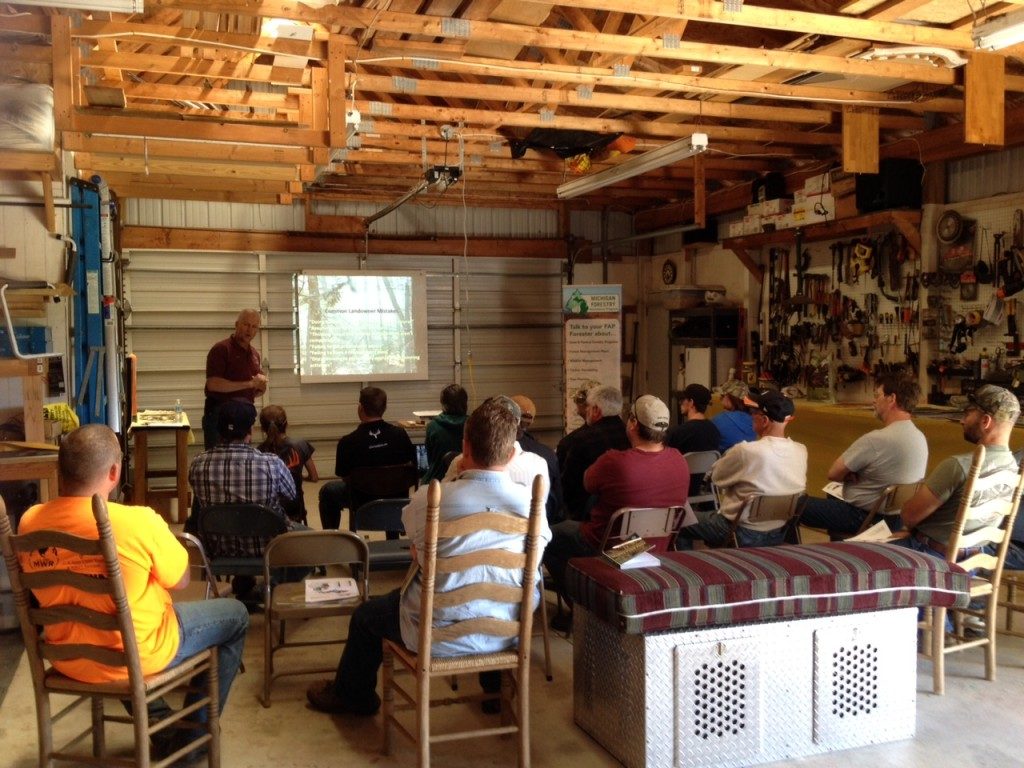
In the Field: Forestry Management for Deer
This weekend I had the privilege to promote cooperatives at the Cadillac Area QDMA Branch Habitat Day. Rick Lucas (a forester with the Conservation District) and Nick Percy (Killer Food Plots LLC) shared their knowledge about habitat management. In this blog I will highlight my observations from Rick’s presentation, and next week I will share my findings from Nick’s presentation.

For starters, Rick has 27 years of experience as a forester. He owns 120 acres, which also happens to be part of the HUNT (Hunters Uniting Neighbors Together) deer cooperative. On their cooperative, many of the buck being harvested are in the 140’s class, which is a major accomplishment for northern Michigan! The following summarizes my notes from Rick’s excellent presentation.
Good deer management starts with YOU. There are about 425,000 landowners in Michigan, 60% of landowners own less than 10 acres. (I was quite excited to be included in the 40%, considering I have 12 acres, but hey – we all start somewhere!) Also, about 70% of the deer herd is supported by private land. To effectively manage for deer, 600-3000 acres are needed to cover the range of most deer. However, 10-20 acres can be managed to attract deer into the property.
Deer require a variety of habitat to survive. Here is the breakdown: 70% deciduous forest, 10% coniferous patches for cover, 15% openings, 5% grass/grain/legume. A benefit of a cooperative is that all of these habitat types should be represented over the cooperative landscape. By working with neighbors, you can create a comprehensive and cohesive management plan.
Timber harvest is important for many reasons – primarily thinning the canopy will increase upland browse: increased sunlight produces increase grass/forb production. Managing the forest allows for mast production to be released, allows regeneration to establish, controls forest composition and density, diversifies the age structure, and enhances bedding areas.
Speaking of mast production, as a landowner, there is a new smartphone application that can help you track hard and soft mast on your property. It is very user friendly, and simple to use. Find out more at www.mimast.org.
Tip: You need access trails around your property. Why not convert them into food plots?
A lot of times, properties already have a lot of what they need to support deer. Look around your property for fruit producing trees. These trees should be pruned in December-March. Pruning them will allow for more energy to go towards producing fruit. It is also important to thin the foliage surrounding the fruit trees to maximize the sunlight that gets to these plants. Remember, it costs a lot to start up a fruit tree as a seedling. By managing what you already have, you can save a lot of time and money!
Rick’s big take away was to emphasize the importance of a management plan. Habitat management is a long term relationship. It takes time, planning, and care. Habitat management is hardly a quick fix. Inventory your property, enhance what is there, and plan how to fill in the missing pieces. Then, plan out how you will maintain your property over the long haul.
If you need assistance with how to get started on managing your property, feel free to contact me and I can point you in a direction on who is able to help you out in your area. Remember, often times, there are resources and knowledge within a cooperative as well. Ask your neighbors what they have done on their property. They may have equipment and a willingness to help you out. After all, what you do on your property benefits wildlife of all shapes and sizes who utilize more than just your acreage. As the Bacon Creek Cooperative motto states: What we do, we do for all.
You can reach me at 517-346-6454 or amitterling@mucc.org
